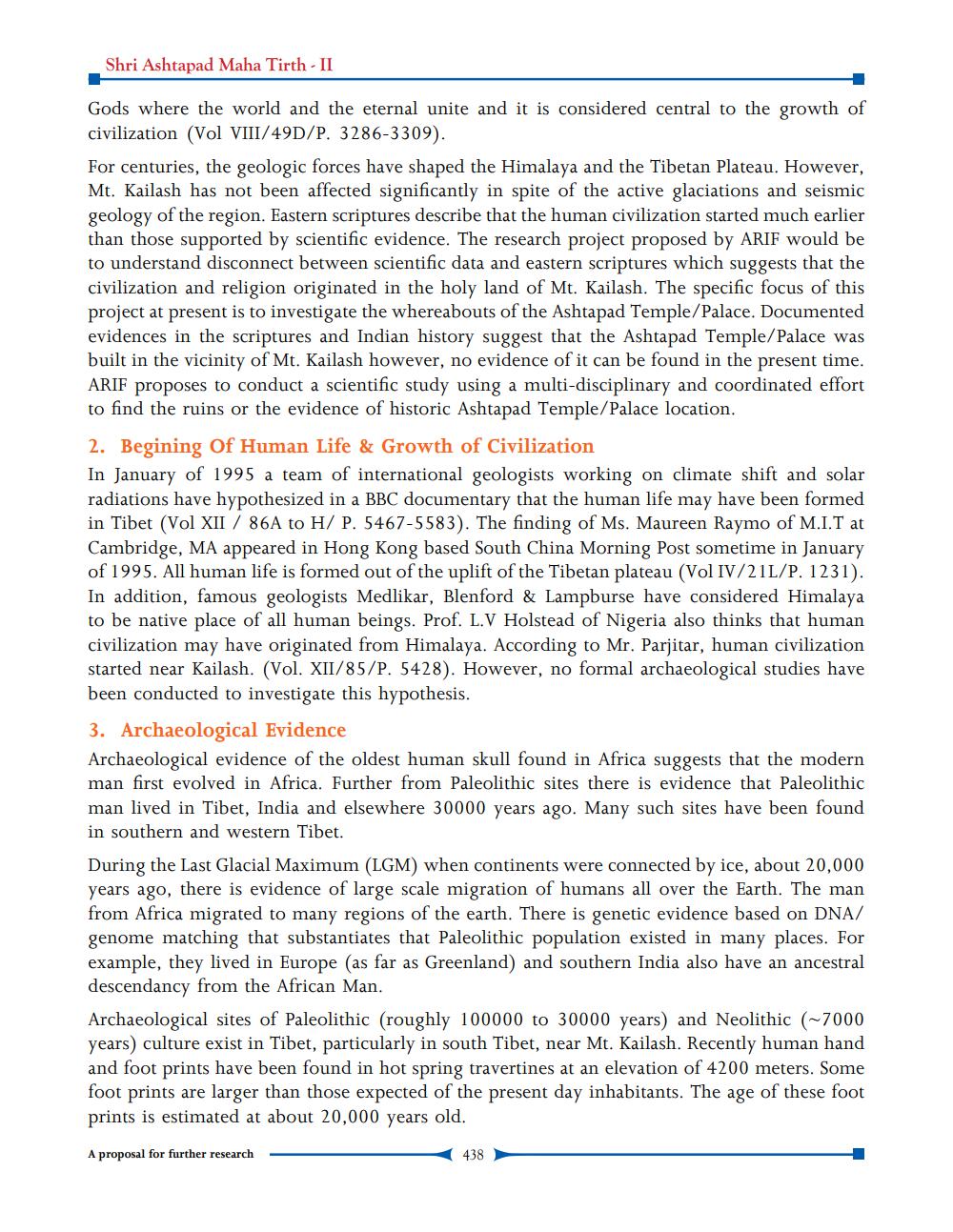________________
Shri Ashtapad Maha Tirth - II
Gods where the world and the eternal unite and it is considered central to the growth of civilization (Vol VIII/49D/P. 3286-3309). For centuries, the geologic forces have shaped the Himalaya and the Tibetan Plateau. However, Mt. Kailash has not been affected significantly in spite of the active glaciations and seismic geology of the region. Eastern scriptures describe that the human civilization started much earlier than those supported by scientific evidence. The research project proposed by ARIF would be to understand disconnect between scientific data and eastern scriptures which suggests that the civilization and religion originated in the holy land of Mt. Kailash. The specific focus of this project at present is to investigate the whereabouts of the Ashtapad Temple/Palace. Documented evidences in the scriptures and Indian history suggest that the Ashtapad Temple/Palace was built in the vicinity of Mt. Kailash however, no evidence of it can be found in the present time. ARIF proposes to conduct a scientific study using a multi-disciplinary and coordinated effort to find the ruins or the evidence of historic Ashtapad Temple/Palace location. 2. Begining Of Human Life & Growth of Civilization In January of 1995 a team of international geologists working on climate shift and solar radiations have hypothesized in a BBC documentary that the human life may have been formed in Tibet (Vol XII / 86A to H/ P. 5467-5583). The finding of Ms. Maureen Raymo of M.I.T at Cambridge, MA appeared in Hong Kong based South China Morning Post sometime in January of 1995. All human life is formed out of the uplift of the Tibetan plateau (Vol IV/21L/P. 1231). In addition, famous geologists Medlikar, Blenford & Lampburse have considered Himalaya to be native place of all human beings. Prof. L.V Holstead of Nigeria also thinks that human civilization may have originated from Himalaya. According to Mr. Parjitar, human civilization started near Kailash. (Vol. XII/85/P. 5428). However, no formal archaeological studies have been conducted to investigate this hypothesis. 3. Archaeological Evidence Archaeological evidence of the oldest human skull found in Africa suggests that the modern man first evolved in Africa. Further from Paleolithic sites there is evidence that Paleolithic man lived in Tibet, India and elsewhere 30000 years ago. Many such sites have been found in southern and western Tibet. During the Last Glacial Maximum (LGM) when continents were connected by ice, about 20,000 years ago, there is evidence of large scale migration of humans all over the Earth. The man from Africa migrated to many regions of the earth. There is genetic evidence based on DNA/ genome matching that substantiates that Paleolithic population existed in many places. For example, they lived in Europe (as far as Greenland) and southern India also have an ancestral descendancy from the African Man. Archaeological sites of Paleolithic (roughly 100000 to 30000 years) and Neolithic (-7000 years) culture exist in Tibet, particularly in south Tibet, near Mt. Kailash. Recently human hand and foot prints have been found in hot spring travertines at an elevation of 4200 meters. Some foot prints are larger than those expected of the present day inhabitants. The age of these foot prints is estimated at about 20,000 years old.
A proposal for further research
438




